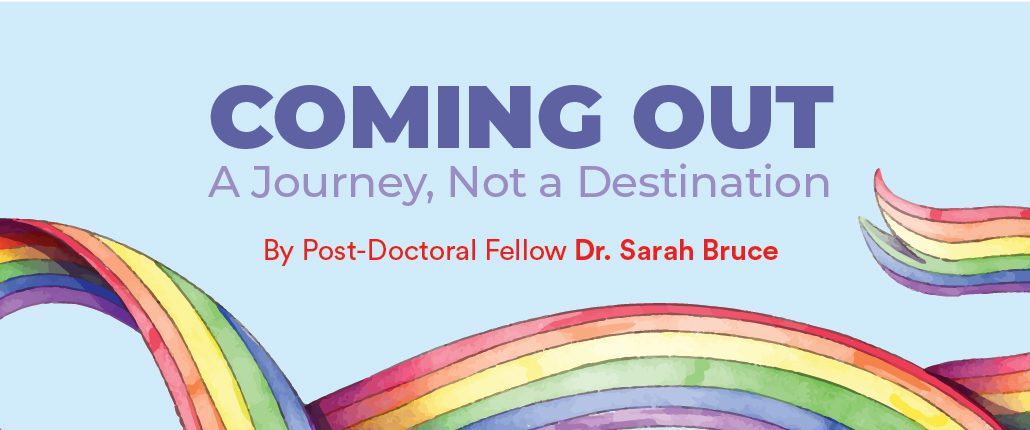
“Coming Out”: A Journey, Not A Destination
October is here, marking the return of pumpkin spice, LGBTQIA+ History Month, and National Coming Out Day! National Coming Out Day, celebrated every year on October 11, was established to raise awareness about the LGBTQIA+ community and to show support for LGBTQIA+ equality. For many, National Coming Out Day evokes feelings of pride and excitement, yet others may feel pressured and anxious about “coming out” (sharing information about their gender identity or sexual orientation with others). “Coming out” is often conceptualized as an “act of bravery” or a decision to “live openly and authentically,” which can potentially leave those who struggle with defining and sharing their gender identity and/or sexual orientation feeling ashamed and alone. Feelings associated with “coming out” are personal and unique to every individual, and “coming out” often gives rise to both positive and negative emotions.
When making decisions about if and when to “come out,” LGBTQIA+ people may consider a variety of different factors, including safety, housing, and potential reactions of family members and friends. As some families may reject LGBTQIA+ family members and refuse to allow them to live at home, many LGBTQIA+ people are unable to “come out,” because doing so could place them in an unsafe environment or lead to homelessness. They may also decide not to “come out” at a certain time due to fear of rejection and disconnection from loved ones. LGBTQIA+ people may choose not to “come out” even when their family and friends may be supportive, because they are not sure how loved ones will react and may not want to risk losing the acceptance and respect of the people they care about the most. Certain situations can also lead LGBTQIA+ people to wait to come out, such as feeling unsure about their gender identity and/or sexual orientation or experiencing negative feelings about their gender identity and/or sexual orientation.
In the media and popular culture, “coming out” is often portrayed as a life-changing, singular event that either ends in crushing disappointment or a great celebration (a kiss between two gay characters on a Ferris wheel to thunderous cheers and applause in Love Simon comes to mind). However, it may be more accurate to think of “coming out” as a life-long journey rather than a final destination. “Coming out” is a decision that is made every day during every social interaction. As gender identity, sexual orientation, and pronouns may shift from day to day or multiple times over the course of a lifetime, “coming out” may also occur with the same set of people multiple times. Neurodivergent individuals who also identify as LGBTQIA+ may consider disclosing their neurodiversity to others as a form of “coming out,” such that they are engaging in “double coming out” throughout their lifetime. In addition, some individuals who identify as LGBTQIA+ decide never to “come out.”
“Coming out” is a journey that may evoke negative emotions but can also include moments of beautiful, affirming relationship growth. Every LGBTQIA+ person has a unique “coming out” timeline, and determining this timeline is a personal and complex process. LGBTQIA+ people are deserving of love, respect, acceptance, and support no matter where they are on their “coming out” journey. If you or someone you care about would like to explore “coming out” or other LGBTQIA+-related topics, seek support, or connect with others in the LGBTQIA+ community, please contact us at Kaleidoscope for more information.